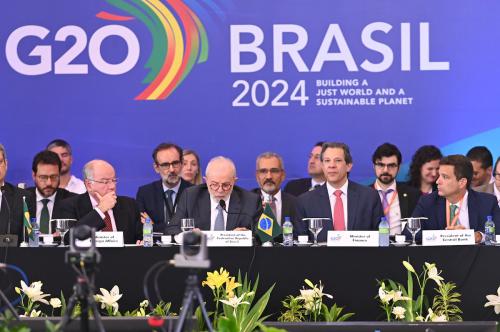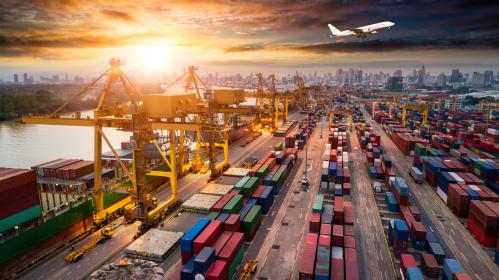“We were the ghostbusters! Who else were ya gonna call?” With those words, James Boughton, an economist at the International Monetary Fund, recalls the period that began on July 2, 1997, when Thailand was forced to devalue its currency amid financial turmoil that soon spread to neighboring countries and eventually across oceans and continents. From the Washington headquarters of the 180-nation IMF, staffers began jetting into one foreign capital after another, mobilizing tens of billions of dollars in emergency loans as markets plunged, investors fled and defaults loomed in South Korea, Indonesia, Russia, Brazil, Turkey and Argentina. The Fund’s efforts to exorcise the demons of panic from the markets—heavily influenced by its political overseers in the U.S. Treasury—sometimes failed miserably, and drew plenty of criticism. But the crisis-stricken countries had little choice but to turn to the IMF, given its war chest of dollars; and without the Fund, the outcome could have been much worse.
Today, the prospect that firebells will ring again at the IMF might seem remote. Nary a crumbling currency is in sight; on the contrary, financial markets, buoyed by the robust global economy and low interest rates, are manifesting extraordinary confidence in fast-growing developing countries. A record $550 billion in net private capital poured into the emerging markets of Asia, Latin America, Eastern Europe and Africa last year.1 Even countries that previously failed to draw much attention from investors, such as Bangladesh and Cote d ‘Ivoire, have enjoyed major inflows, with Standard & Poor’s index of stock markets in 22 such countries up some 400 percent over the past five years. Giant investors such as pension funds and mutual funds have snapped up bonds issued by emerging market governments and companies, enabling former deadbeat debtors to borrow at attractive rates.
But similar exuberance preceded the crises in Asia, and there should be no illusion that the centuries-old pattern of financial booms turning to busts has fundamentally changed. The question is, will future crises prove more manageable than before—or less?
Optimists cite impressive evidence showing how many of the problems that fueled the crises of the 1990s have receded. With a handful of exceptions, developing countries are racking up trade surpluses that, as calculated by the broad current account measure, totaled $640 billion in 20062, thanks partly to the soaring prices that they are receiving for exports of commodities. As a result, not only are they far less dependent than they used to be on foreign investors for the capital they need to keep their economies functioning; some of them have amassed huge stockpiles of foreign currencies in their central banks, in amounts that dwarf any IMF rescue—China’s $1.2 trillion being the most famous example, with others including South Korea and oil-rich Russia and Venezuela. Many once-profligate governments have brought their budget deficits under control and have been sensibly using their savings to reduce their debt burdens. Moreover, the rigidly-pegged currencies that once provided such tempting targets for speculators are, in most countries, relics of the past.
So the optimists believe that crises are likely to be isolated and easily contained—perhaps striking only in emerging markets that are still running current account deficits. But such a sanguine view overlooks some eternal verities about Why Bad Things Happen to Good Markets.
One of those verities is that markets have a capacity for turning treacherous in ways that even the smartest observers fail to anticipate. Obscure sources of instability lurk in the financial system, unnoticed because they appear harmless during periods of calm. The most notorious illustration is the giant hedge fund Long-Term Capital Management, which despite its Nobel prizewinning investment strategists collapsed following the default of Russia in 1998, putting the entire global system at risk because of its links with major financial institutions. That oft-cited case is by no means the only one; others abounded during the crises of the 90s. In Korea, both the IMF and Korean officials completely overlooked a major vulnerability—the debt of Korean entities based overseas, such as the U.S. branches of major Korean banks. Before the crisis, these tens of billions of dollars in short-term obligations had seemed of no concern, because creditors routinely rolled them over as they came due. But once foreigners suddenly started calling in their loans to anyone or anything Korean, all those debts required the payment of dollars from Korea’s central bank, exacerbating the panicky outflow of capital from the country.
Another verity is that the riches to be had in bull markets would tempt a saint to act recklessly—and saintly virtue is not common on Wall Street. People in financial markets have ingrained tendencies, and powerful incentives, to go for short-term, sure-fire income (such as up-front fees for making loans) even when their actions are likely to lead to debt troubles, instability and even greater losses in the long run. Just as in the current woes of the subprime mortgage market, with its cast of lenders and brokers who enriched themselves by granting mortgages on unsound terms, the world of international investing and lending is replete with examples of excessive credit issuance fueled by myopia and greed. The gory details are spelled out in a couple of books about the crises of the 1997-2001 period3. (Please forgive the shameless plug; I ‘m the author.)
Nobody can say where, and how, crises will erupt in coming years. But for the ghostbusters of yore, the current financial scene is chock-full of phenomena both unfathomable and disquieting.
The Great Game of emerging markets investing is attracting money from players who were never involved in it before, and for watchdogs like the IMF it’s often impossible to divine who they are or what they’re doing, much less how they might behave if the financial environment suddenly turned nasty. That’s partly because of the explosive growth in the derivatives market (essentially bets on the movement of things such as interest rates, or on the risk of default by a particular borrower), which are traded in private transactions from one giant institution to another. Some of the players, such as hedge funds, are familiar, but they are venturing even further into the wilds than ever—speculating, for example, on the currencies of nations with rudimentary financial systems such as Malawi and the Central African Republic. Other huge players are new and untested, notably the “sovereign wealth funds” of oil-rich states; except for Norway, they are run by countries that tend to be fanatically secretive about their portfolios.
Finally, Jim Boughton and his colleagues have another worry—the possibility that they may lose their monopoly on ghostbusting to countries loaded with reserves. If, say, Brazil or Uruguay were to land in trouble, presumably Venezuela would seek to play the role of savior; likewise, China might offer to bail out an Asian neighbor that hits a rough patch. The IMF’s critics may relish that prospect, but the resulting erosion in the Fund’s authority could be one more reason to fear that the next crisis will be harder to quell than the last.
1 Institute of International Finance, “Capital Flows to Emerging Market Economies,” May 31, 2007, www.iif.com.
2 International Monetary Fund, World Economic Outlook, April 2007, www.imf.org.
3 Paul Blustein, The Chastening: Inside the Crisis That Rocked the Global Financial System and Humbled the IMF (PublicAffairs, 2001) and And the Money Kept Rolling In (And Out): Wall Street, the IMF, and the Bankrupting of Argentina (PublicAffairs, 2005).



Commentary
Op-edManaging Future Financial Crises: The IMF’s Role
June 27, 2007